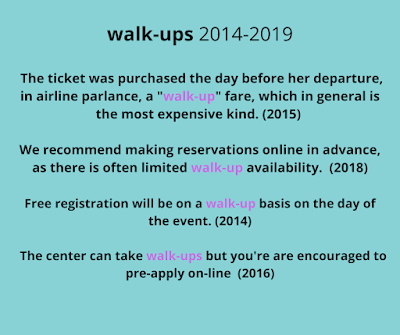Are you hyphen-hesitant?
At a recent webinar on EAP vocab, the topic of prefixes had come up and someone asked me the best way to teach students about when to hyphenate words with prefixes.
My first answer – which I wasn’t quick enough to give at the time – is I’d tell them to really not worry about it!
My second answer – and the one which I gave – is if they’re not sure, check in a dictionary. Although, to be honest, good luck with that …
Recently, I’ve been spending a lot of my time researching prefixed words and one of the things I’ve been checking is which are typically hyphenated and which are closed (no hyphen). And the results are really messy. It seems that a corpus search for almost any prefixed word will throw up a mix of both options.
Dictionaries: Dictionaries seem to vary a bit in their approach to showing prefixed words. Most though show the most frequent spelling as the headword, then the other alternative as a variant.
Some trends: Although it’s an area where there aren’t firm rules, there are a few tendencies:
Fixedness: Typically, newly created prefixed words
tend to start off with a hyphen – perhaps to make the original root word
clearer and the novelty less confusing. Then over time, as the combination
becomes more familiar and fixed, the hyphen often gets dropped – think e-mail
> email, on-line > online.
US vs UK: Also as a general rule of thumb, Brits tend to use more hyphens than Americans.
Double vowels: Where a prefix ends in a vowel and the root word starts with a vowel, hyphens are more common to avoid possible confusion over the pronunciation of the double vowel sound. So, co-opt is quite clearly /kəʊˈɒpt/ (two separate O sounds) whereas coopt not only looks a bit weird, but could potentially be pronounced /kuːpt/!
Looking at a few random corpus examples of prefixed words with double vowels, it’s clear that there are a mix of factors in play. The mispronouncability of the closed compound may be one – try antiageing without a hyphen. And some more familiar, fixed combinations, like preempt and preamble, are less likely to be hyphenated compared with more novel ones that err towards a hyphen – semiindependent is clearly a step too far for most people!
Note: All my corpus stats here are very rough and ready – this isn’t a careful academic analysis – but I think they probably represent the general trends. With this kind of thing, you also need to bear in mind all kinds of different factors, like the influence of style guides – so, for example, a major publisher or media group might decide at a certain point to shift from using e-mail to email and that could have quite an impact on corpus stats. As ever, language gets pushed and pulled by all kinds of sometimes mysterious forces!
Labels: corpus research, dictionaries, hyphens, language variation, prefixes, spelling














